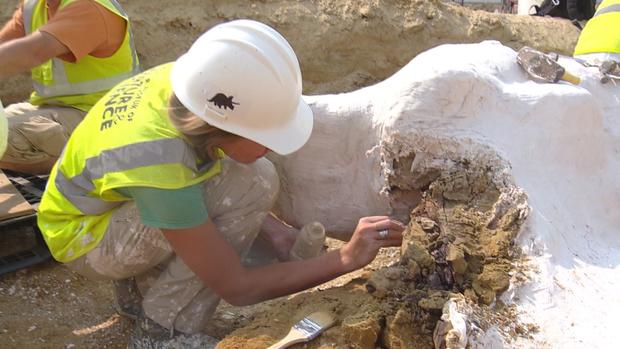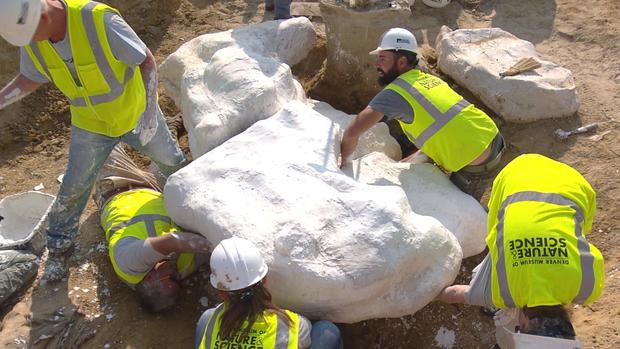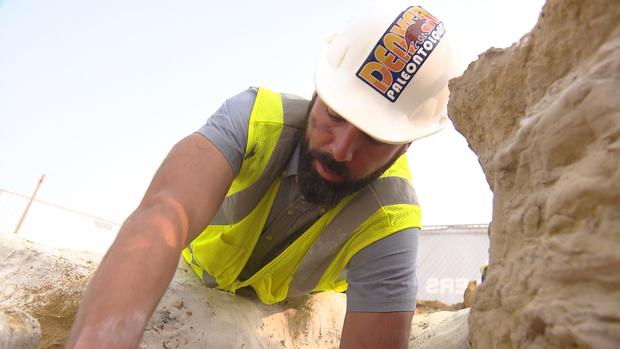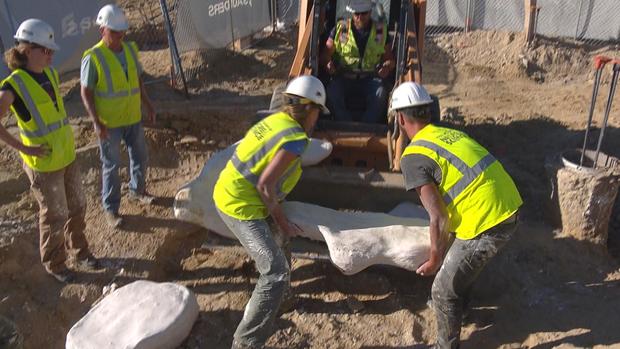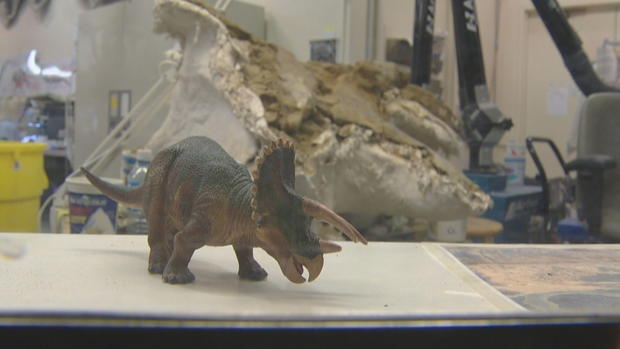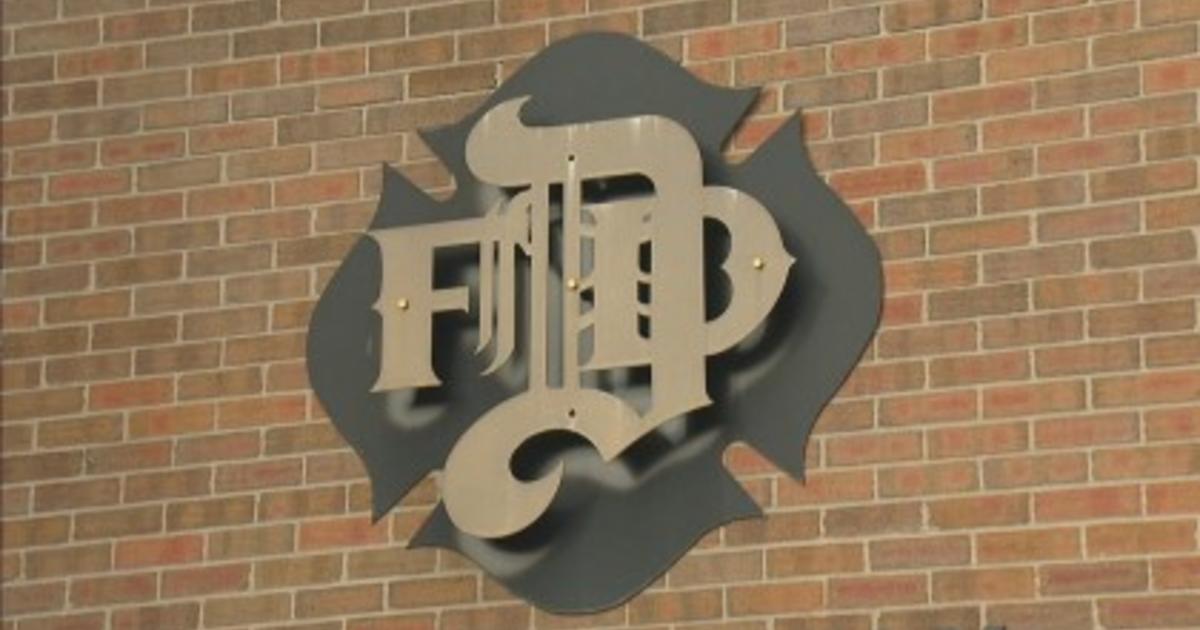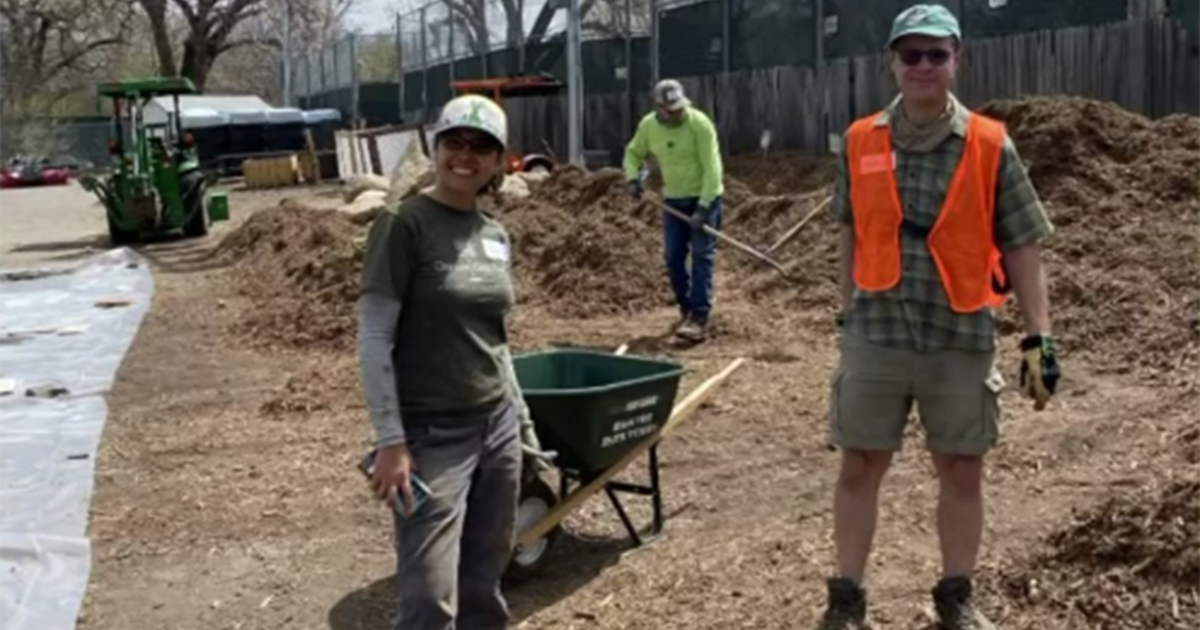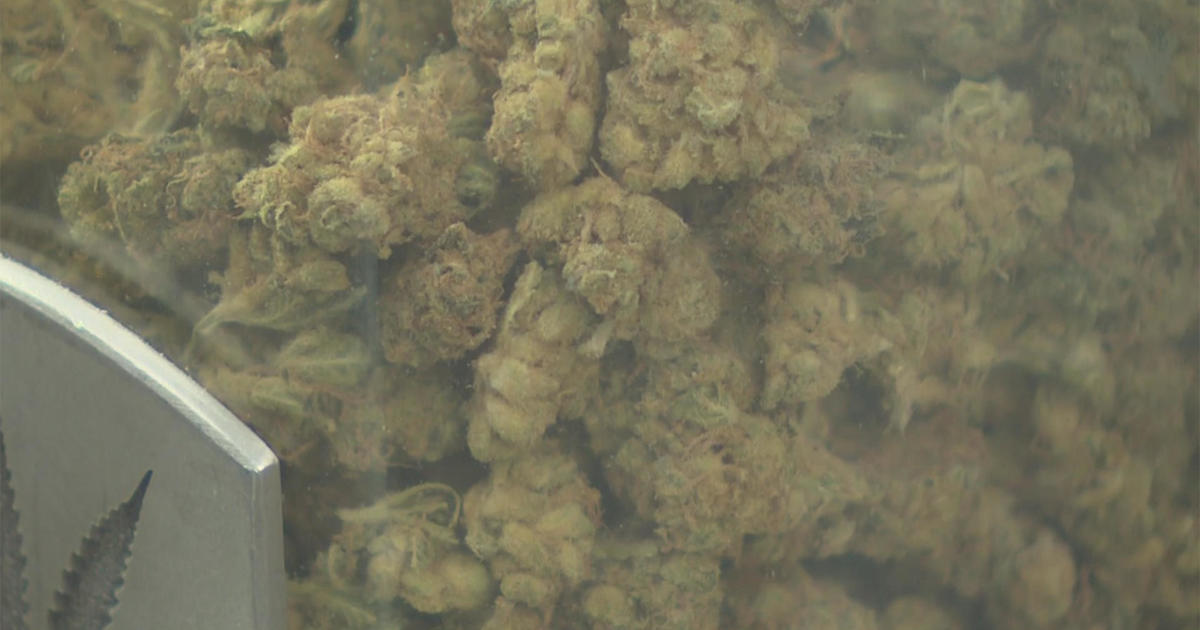'Tend To Be A Little Brittle': Scientists Remove Fragile Fossils From The Ground
DENVER (CBS4)- One of the largest triceratops discoveries ever happened right in Colorado. Crews building a new police station in Thornton discovered the dinosaur fossils.
Scientists from the Denver Museum of Nature and Science worked tirelessly to excavate the bones from the Earth and bring them back to the museum without destroying them.
The crews were working to build a new public safety facility for the City of Thornton near 132nd and Quebec when all work came to an abrupt halt on Aug. 25. Construction workers gawked at what had been found.
"Right away, the initial reaction they had was, 'Wow look at that, that really could be a dinosaur,'" said Dan Wagner, the construction site inspector who made the discovery.
Scientists with the Denver Museum of Nature and Science inspected the find and said the bones belonged to a triceratops, a rare one.
"I just found another bone where I didn't want to," said DMNS Curator of Dinosaurs Dr. Joe Sertich.
The excitement surrounding the discovery quickly turned to dread as Sertich says the historic discovery is also an epic mess.
"I'm trying to get this big block separate, so I want plaster. I want to pull it up out of here, get it out of the way, but the horn is touching this bone. There are at least three other bones going in along the edge, and every time I try to dig around them I hit something else," said Sertich.
The deeper the crews dug, the more complicated it became to move the dinosaur.
"So this is one of the large sections that the museum was hoping to get out late last week but in order to do it they had to dig underneath and when they did they ended up finding even more bone," said Sertich.
Fossils, once they're uncovered, can't just be dusted off and moved. When the fossils are exposed to the air, they have to be treated with a plastic resin to harden so the bones won't crack.
"These have been lying here for 66 million years so they tend to be a little brittle," said one scientist.
DMNS experts says the fossil could be as much as 66 million years old. The triceratops is one of the last dinosaurs to walk the Earth. The find in Thornton is one of the most complete discoveries ever from that time.
Once dinosaur hunters unearth the bones and treat them, they then try to get below the fossils. They make casts out of what looks like a pancake mix, making shells that rival the size of the triceratops itself.
"If you have a jacket that is weak or the plaster is not mixed well or you're using poor materials the jacket can fail, things can crack or break out of it," said DMNS fossil preparator Natalie Toth.
It also raises the stress level. If one thing goes wrong, everything could be lost.
"When you have that 'One, two, three' you king of hold your breath for a minute," said Toth.
Small pieces move easily but the first bones that were found proved to be the most difficult.
"The original discovery bone it looked like we would be able to get it right out of the ground and here we are on our third day of digging and it's still sitting here," said Sertich.
In one case, scientists had to break the bones to get them out of the ground.
"To reduce the weight of these jackets ... we've had to break a few ribs. They'll go right back together in the lab," said Sertich.
What paleontologists thought would only take a few days to excavate ended up taking weeks.
Now in the quiet of the lab, scientists are faced with a new challenge: removing dirt and studying every millimeter of the triceratops. The next phase -- to find out what this dinosaur's life was like -- could take years.
CBS4 is a proud partner of the Denver Museum of Nature and Science on the Thornton triceratops discovery. Watch CBS4 News for exclusive stories from reporter Stan Bush and photojournalist Mark Neitro at the dig site and in the museum's lab.
